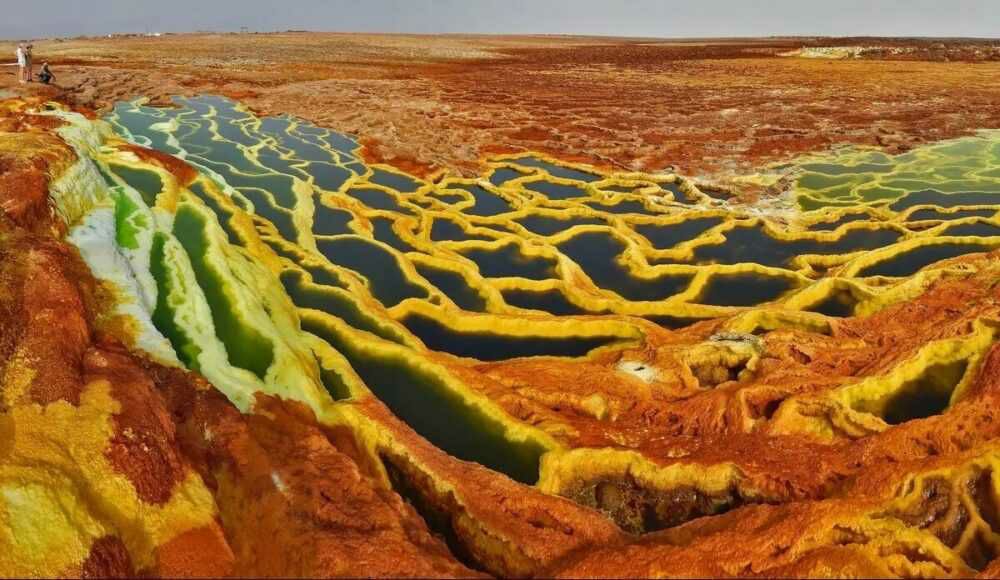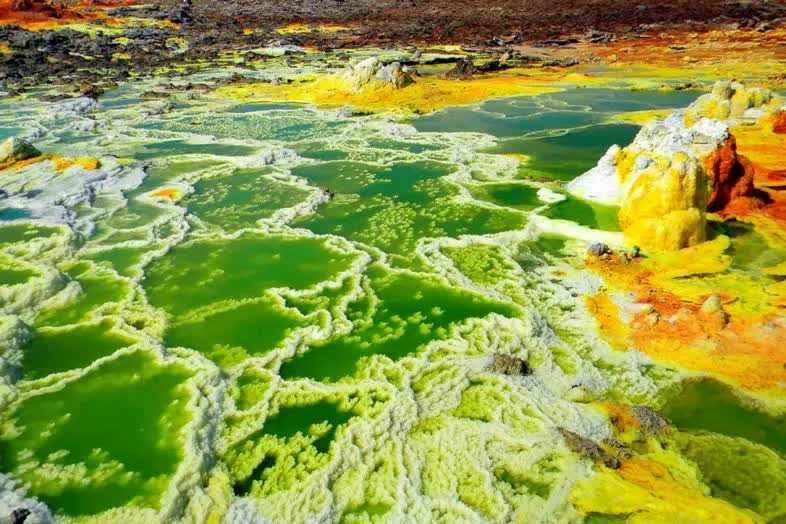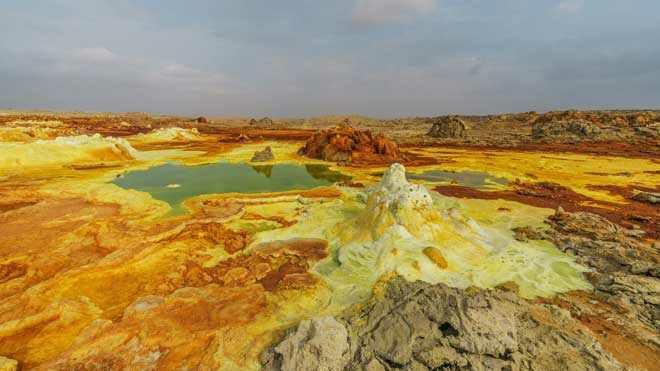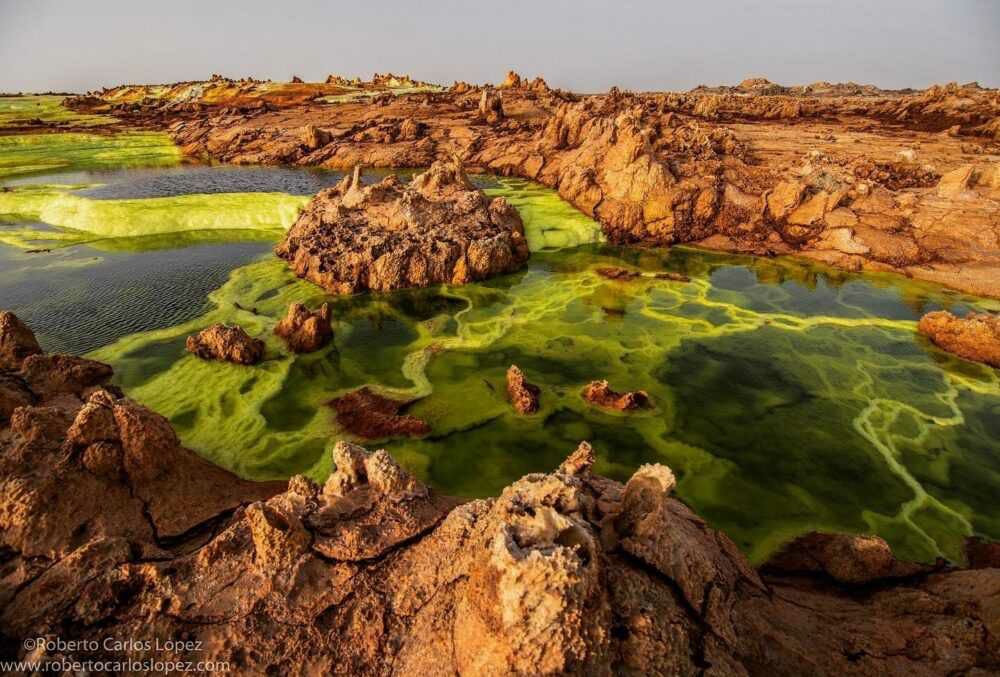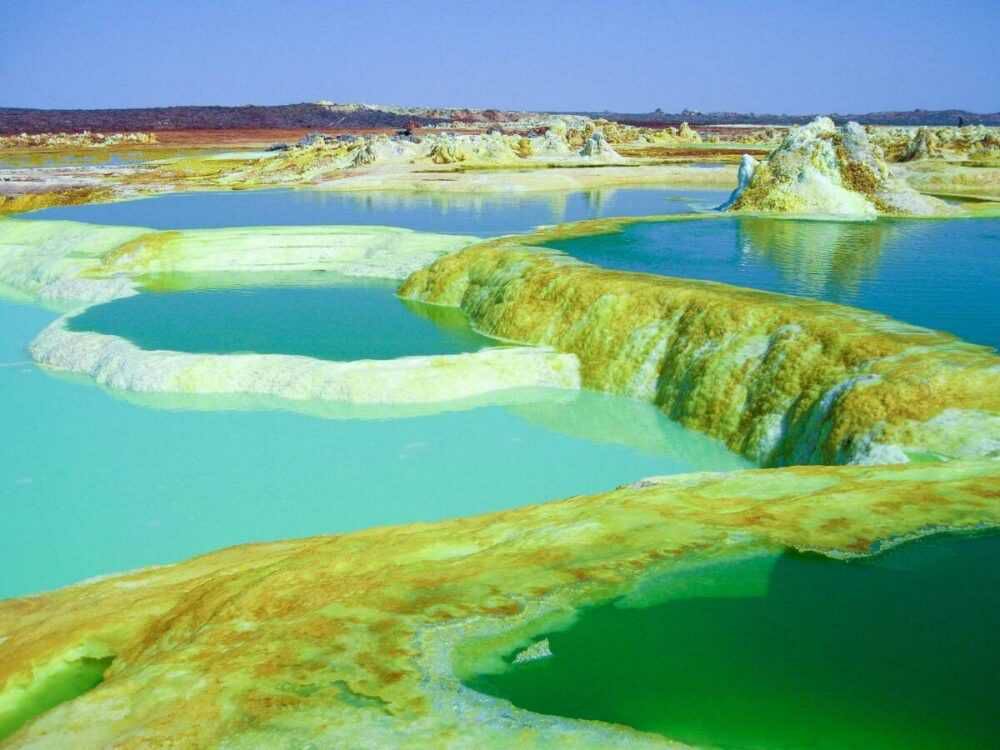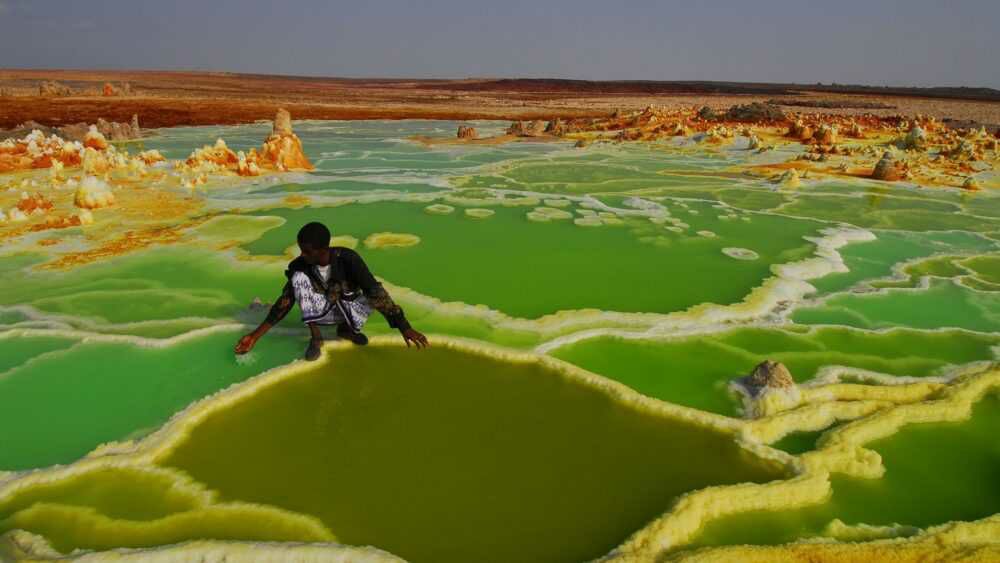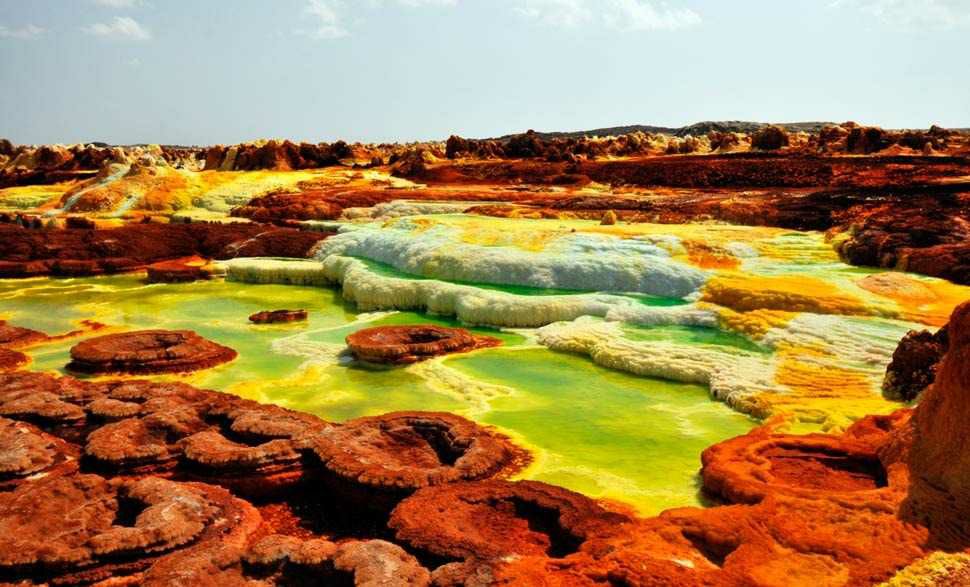The only place on Earth where life is not possible: But this location resembles a fairyland.
Places such as the North Pole, the South Pole, the equator, deserts, or the Dead Sea are all notorious for their harsh environments, yet they still harbor unique forms of life.
Scientists have recently discovered an area so inhospitable that it cannot sustain any life form. This area is home to the most extreme environment on Earth: the Dallol geothermal region, an incredibly hot, salty, and acidic region.
Dallol is a cone-shaped volcano with a stunning and distinctive appearance located in the Danakil depression in Ethiopia. Daytime temperatures in this region exceed 45 degrees Celsius, even during winter. The area was formed by the intrusion of basalt magma into salt deposits and exhibits intense hydrothermal activity. Situated approximately 100 meters below sea level, Dallol is rich in red rocks, sulfur ore, and salt deposits. In the Afar dialect, Dallol means “destroy.”
Presently, when the volcano is dormant, Dallol is covered in pools. Some of these pools are highly acidic salt pools with extremely low pH levels. After conducting extensive tests, researchers have confirmed the absence of any life forms, including microorganisms, in these pools. These findings have been published in the journal Nature Ecology & Evolution.
“Following the analysis of a much larger number of samples than in previous studies, we can confirm the lack of microbial life in these hot, acidic, and salty basins, as well as in the adjacent magnesium-rich salt lakes known as the Black and Yellow Lakes,” stated the study’s author, biologist Purificación López García from the French National Center for Scientific Research.
The scene in Dallol is enchanting and vibrant, but it is indeed a “place of death.”
Humans are unable to approach Dallol due to its extremely poisonous nature. Toxic gas emanates from the area, and the reaction of hot springs saturated with salt is also toxic. Furthermore, beneath the surface lies a volcano that can erupt unexpectedly. Consequently, only scientists can venture near Dallol.
The analysis and understanding of Dallol hold significant scientific importance, particularly for the space industry. Researchers often use evidence of life in extreme environments on Earth as a reference point to determine whether similar environmental conditions could support life on planets within or outside the solar system. However, the existence of Dallol, where liquid water is present but nothing can survive, has disproven many previous studies.
The beauty of “death” in Dallol captivates observers.
“Our study reveals that there are places on Earth, such as these Dallol basins, that are sterile despite the presence of liquid water,” explained the study’s author. “We do not expect to find life forms on other planets existing in similar environments, or at least not if we are dealing with the same biochemistry as Earth.”
Dallol also stirs controversy within the scientific community because humans have long believed that our planet represents life and evolution, and without life, evolution cannot occur. Yet in Dallol, life truly does not exist.
Hits: 0
